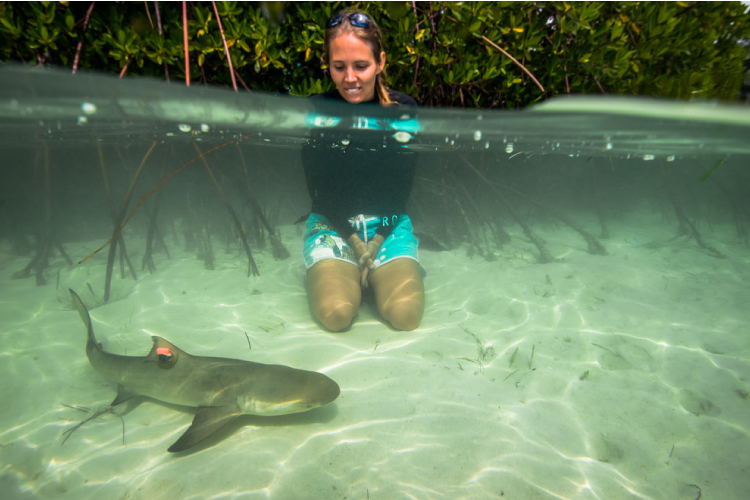6/25/2020
Sensing Predatory Fish
By Cammi Clark
Lauran Brewster, Ph.D., a postdoctoral fellow in the Fisheries Ecology and Conservation Lab at FAU Harbor Branch Oceanographic Institute, recently received a grant by the Save Our Seas Foundation to research the behavioral response of juvenile bull sharks to the harmful algal blooms in the Indian River Lagoon.
Brewster is developing sensors and tracking devices to place on the sharks in an effort to monitor their behavior and movement. This data will assist Matt Ajemian's, Ph.D., an assistant research professor at Harbor Branch, in the ongoing research on the harmful algal bloom toxins.
It was Brewster's involvement with using bio-logging tools and machine learning techniques to better understand the behavioral and physiological ecology of predatory fish, that led her to FAU.
Prior to joining FAU, Brewster earned her doctoral degree at the University of Hull, United Kingdom, the Bimini Biological Field Station, and was an Endeavour Research Fellow at Murdoch University in Western Australia.
The researchers will track three parameters:
• Each week, the saliva of healthcare workers will be tested for the presence of the virus, without long waits and the discomfort of traditional methods. Saliva samples are a preferable indicator for infection than the deep nasal swabs now widely used, recent studies have shown.
• Volunteers will carry an Oura Ring, an activity and symptom tracker that measures physiological signals such as temperature, blood pressure, respiratory rate and other data. This information will be transmitted to the server, providing data to understand clinical signals for illness onset.
• Two serology tests will be conducted to identify antibodies against the virus. One test will occur during the middle of the study period and another few weeks after the study's conclusion.
"We will follow the volunteers for three months to learn how many of them get infected, which we can see with serological and molecular tests," Caputi said. "Are volunteers mounting an immunological response? And how strong is that response? We can identify when they get infected with saliva tests and when they have symptoms with the Oura Ring tracker. We can also learn how many were unknowingly infected but without symptoms."
This study will provide data for a predictive algorithm, which eventually could be used in testing and prevention protocols for healthcare workplaces.
If you would like more information, please contact us at dorcommunications@fau.edu.
